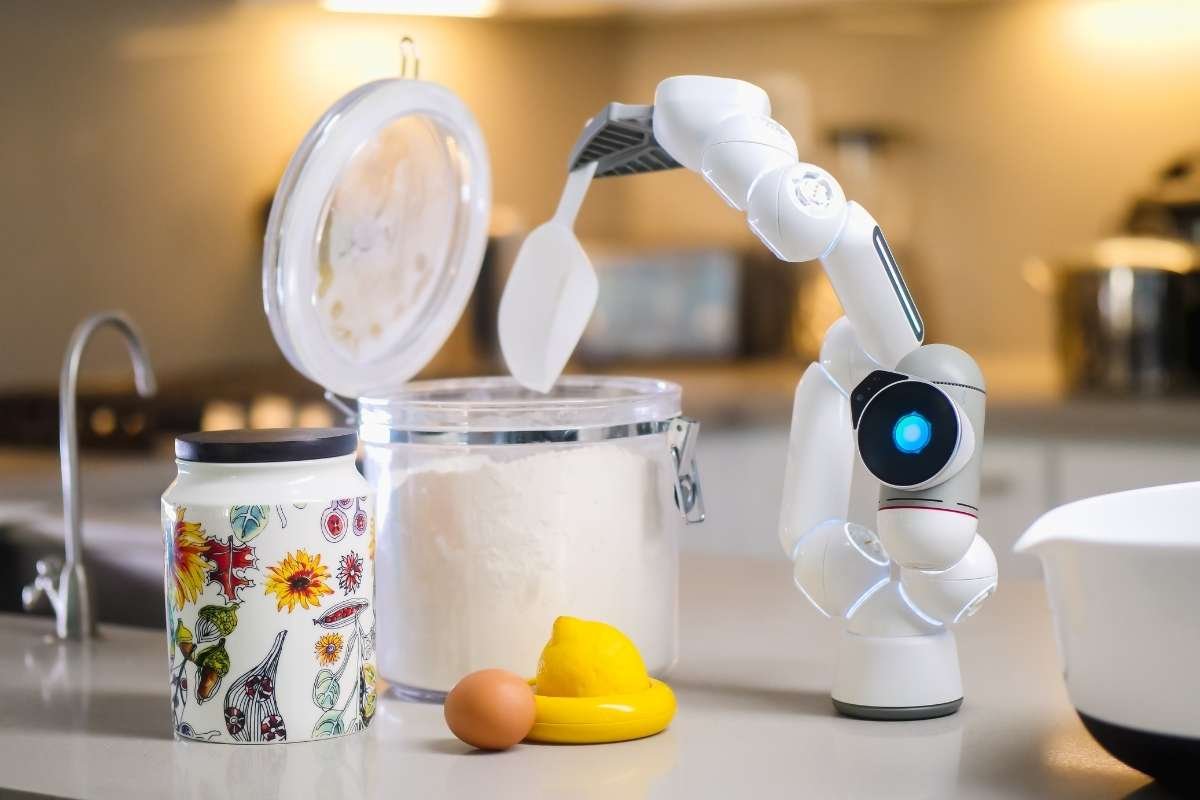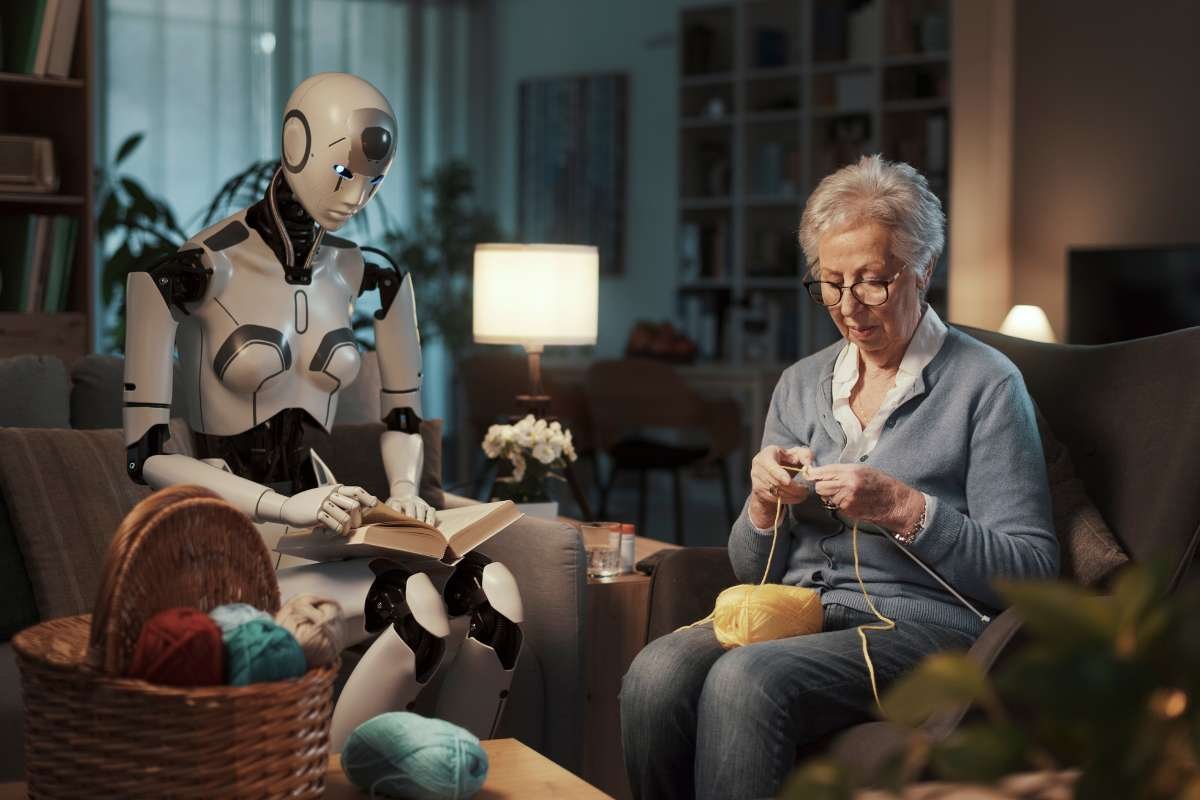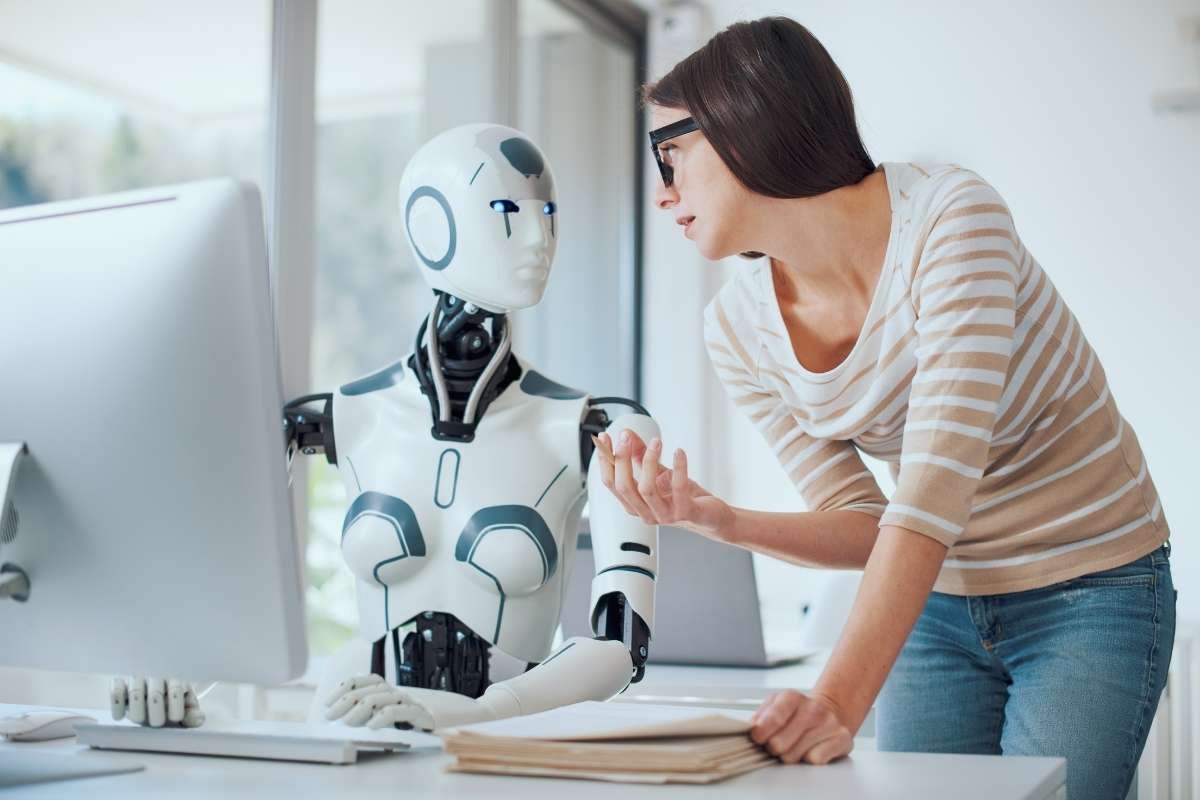Just ten years ago, household robots seemed like pure science fiction, but today, robot assistants are quietly becoming part of our everyday lives. Remember those childhood dreams about robots from movies that would make breakfast and clean the house? Well, the future has finally arrived… though it turned out a bit different from what we imagined.
Modern domestic robots are no longer just toys for tech enthusiasts — they’re practical helpers that are changing our lifestyle. From simple robotic vacuums to complex smart home systems, robotics is penetrating every corner of our daily routine, promising to free up time for more important things.
How Robots Will Change Your Daily Chores:
1. Robotic Vacuums: From Simple “Pucks” to Smart Assistants
Evolution of Technology
I remember my first robot vacuum from 2015 — it reminded me of a half-blind beetle that randomly bumped into walls and furniture. What a comedy that was! Now, modern models work like true professionals.
Key technologies in modern robotic vacuums:
- LiDAR systems — laser scanning for precise mapping
- Computer vision — obstacle recognition and surface type detection
- Artificial intelligence — learning optimal cleaning routes
- Smart home integration — control through voice assistants
“A modern robot vacuum isn’t just a cleaning device, but an entire ecosystem that learns and adapts to your home”
Popular Market Solutions
| Brand | Features | Price Category |
| iRobot Roomba | Patented navigation system, self-emptying | Premium |
| Xiaomi Mi Robot | Great price/quality ratio, precise mapping | Mid-range |
| Roborock | Wet mopping, powerful suction | Mid-to-premium |
| Neato | D-shaped design for corners | Mid-range |
Honestly? I finally understood what true freedom means when my Roborock S7 started cleaning by itself while I was working from home. No vacuum sounds overhead, no cords underfoot — just a clean house by the end of the workday.
2. Companion Robots: Technology Against Loneliness
The Growing Need
With aging populations worldwide, robot assistants for elderly people are becoming more than just a nice-to-have — they’re addressing a real social need. These aren’t the cold, mechanical helpers you might imagine.
Take Japan’s Pepper robot, for instance. When I saw a video of it in action at a Tokyo care facility, I was genuinely surprised by how naturally elderly residents interacted with it. The robot remembered their names, asked about their day, and even reminded them about medication schedules.
Core functions of companion robots:
- Health monitoring — tracking vital signs and medication schedules
- Communication facilitation — video calls with family members
- Entertainment and cognitive stimulation — games, music, conversation
- Emergency assistance — fall detection and emergency alerts
- Emotional support — companionship and mood recognition
Interesting fact: Studies show that elderly people who interact with companion robots report 23% less feeling of loneliness and improved mental health indicators.
The technology behind these companions is fascinating. They use advanced natural language processing to understand context and emotion in speech, while facial recognition helps them remember preferences and respond appropriately to mood changes.
3. Kitchen Robots and Home Automation

Beyond Simple Appliances
The kitchen is where robotics gets really interesting. We’re not just talking about smart refrigerators anymore — we’re looking at systems that can genuinely automate cooking processes.
Current kitchen robotics landscape:
- Moley Robotic Kitchen — the world’s first robotic kitchen with mechanical hands
- Thermomix and similar — advanced food processors with guided cooking
- Automated coffee systems — from bean to cup without human intervention
- Smart cooking assistants — AI-powered recipe guidance and timing
I first saw the Moley kitchen demo at an exhibition. Then, I thought, “This is either the future or the most expensive way to make scrambled eggs.” The system literally has robotic arms that can replicate human chef movements, complete with precise ingredient measuring and cooking techniques.
Integration Challenges
The real challenge isn’t the technology itself — it’s making these systems work together seamlessly. Modern kitchen robots need to integrate with:
- Grocery delivery services for automated ordering
- Smart appliances for coordinated cooking
- Voice assistants for hands-free control
- Mobile apps for remote monitoring and scheduling
4. Garden Robots and Outdoor Maintenance

Autonomous Lawn Care
Remember spending entire weekends mowing the lawn? Robot assistants in the form of robotic lawn mowers have completely changed that game. Unlike their indoor cousins, these outdoor workers face unique challenges: weather conditions, varying terrain, and the need for perimeter detection.
Popular robotic mower features:
| Feature | Benefit | Technology |
| GPS navigation | Precise cutting patterns | Satellite positioning |
| Weather sensors | Automatic rain detection | Moisture and pressure sensors |
| Anti-theft protection | Security features | PIN codes and GPS tracking |
| Mulching capability | Natural fertilization | Specialized cutting blades |
The evolution of outdoor automation has been remarkable. These systems can now handle slopes up to 45 degrees, navigate complex garden layouts, and even return to charging stations when the battery runs low.
Beyond Lawn Care
Garden robotics is expanding into other areas:
- Weeding robots using computer vision to identify and remove unwanted plants
- Automated irrigation systems with soil moisture monitoring
- Plant monitoring robots that can assess plant health and growth
- Harvesting assistance for small-scale agricultural applications
5. Barriers to Mass Adoption

The Reality Check
Despite all these amazing capabilities, widespread adoption of domestic robots faces significant hurdles. About what’s holding us back:
Economic Barriers:
- High upfront costs (premium robots cost $2,000-$10,000+)
- Ongoing maintenance and software update fees
- Replacement costs for specialized components
Technical Limitations:
- Limited adaptability to unique home layouts. One challenge is that consumers often don’t understand the capabilities and limitations of different kinds of robots available for home use, leading to unrealistic expectations and disappointment.
- Difficulty handling unexpected situations
- Integration challenges with existing systems
- Reliability issues in complex environments
Social and Psychological Factors:
- Privacy concerns about data collection
- Discomfort with robots in personal spaces
- Fear of technology replacing human interaction
- Learning curve for older adults
“The biggest barrier isn’t technology — it’s trust. People need to feel confident that robots will enhance their lives without compromising their privacy or autonomy.”
The Privacy Dilemma
Modern domestic robot assistants are essentially mobile surveillance systems. They map your home, learn your routines, and often upload this data to cloud servers. While companies promise security, the potential for misuse is real.
Key privacy concerns:
- Home mapping data — detailed layouts could be valuable to burglars
- Behavioral patterns — when you’re home, sleep schedules, and daily routines
- Audio/video recording — some robots have always-on microphones and cameras
- Third-party data sharing — unclear policies about data sales or sharing
The Future of Domestic Robot Assistants

What’s Coming Next
The next decade promises some genuinely exciting developments, especially with the rise of robot assistants. We’re moving toward universal mobile robots — think of them as Swiss Army knives of the robotic world.
Emerging trends:
- Humanoid helpers capable of multiple household tasks
- Advanced AI integration for natural conversation and learning
- Improved affordability through mass production and technological advances
- Seamless ecosystem integration connecting all smart home devices
Timeline predictions:
| Timeframe | Expected Developments |
| 2025-2026 | Mainstream adoption of multi-function robots |
| 2027-2029 | Significant price reduction in premium features |
| 2030-2035 | Universal household robots become common |
The most exciting development? Machine learning capabilities that allow robots to truly understand and adapt to individual households. Imagine a robot that learns your family’s routines, preferences, and even anticipates needs before you express them.
Challenges Ahead
But let’s not get carried away with the hype. Several challenges remain:
- Energy efficiency — battery technology still limits operational time
- Durability — household environments are tough on mechanical systems
- Repair and maintenance — complex robots require specialized service
- Standardization — lack of universal protocols between different brands
Conclusion
Looking back at this journey through domestic robotics, I’m struck by how far we’ve come and how far we still have to go. Robot assistants are no longer just science fiction; they’re practical tools gradually transforming our daily lives.
The current generation of household robots may not be the all-capable helpers we dreamed of, but they’re solving real problems for real people. From giving elderly individuals companionship to freeing busy families from tedious chores, these technologies are making a genuine difference.
The most successful domestic robots are those that enhance our lives without trying to control them. They handle the mundane tasks so we can focus on what truly matters: spending time with loved ones, pursuing our passions, and living fuller lives.
As we look toward the future, the question isn’t whether robots will become more integrated into our homes — it’s how we’ll shape that integration to preserve what makes us human while embracing the possibilities that technology offers.
The future of domestic robotics is about creating more time for the things that make life meaningful.








